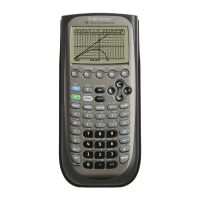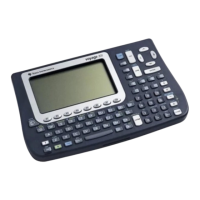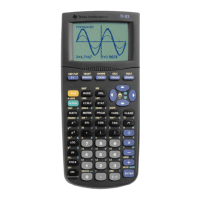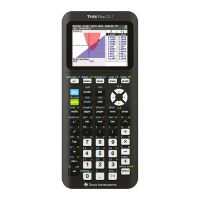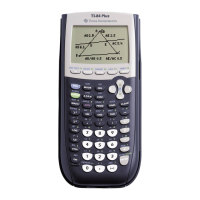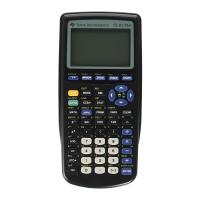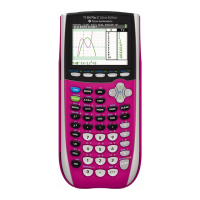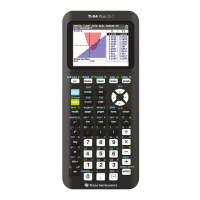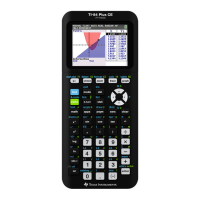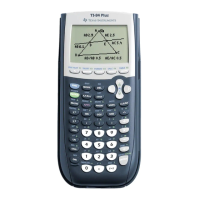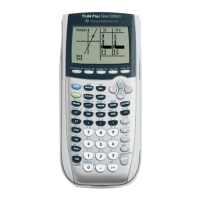Appendix A: Functions and Instructions 883
¡, ', " 2“ key (¡), 2È key ('), 2É key (")
dd
¡
mm
'
ss.ss
" ⇒
expression
dd
A positive or negative number
mm
A non-negative number
ss.ss
A non-negative number
Returns
dd
+(
mm
/60)+(
ss.ss
/3600).
This base-60 entry format lets you:
•
Enter an angle in degrees/minutes/seconds
without regard to the current angle mode.
•
Enter time as hours/minutes/seconds.
In Degree angle mode:
25°13'17.5"
¸ 25.221
...
25°30'
¸ 51/2
'
(prime)
2È key
variable
'
variable
''
Enters a prime symbol in a differential equation. A
single prime symbol denotes a 1st-order differential
equation, two prime symbols denote a 2nd-order,
etc.
deSolve(y''=y^(ë 1/2) and
y(0)=0 and y'(0)=0,t,y) ¸
2øy
3/4
3
=t
_
(underscore)
@ ¥ q key H 2 q key
expression
_
unit
Designates the units for an
expression
. All unit
names must begin with an underscore.
You can use pre-defined units or create your own
units. For a list of pre-defined units, refer to the
module about constants and measurement units.
You can press:
@ 2 9
H
¥À
to select units from a menu, or you can type the
unit names directly.
3_m 4 _ft ¸ 9.842…ø_ft
Note: To type
4
, press
2 p
.
variable
_
When
variable
has no value, it is treated as
though it represents a complex number. By
default, without the _
, the variable is treated as
real.
If
variable
has a value, the _ is ignored and
variable
retains its original data type.
Note: You can store a complex number to a
variable without using _
. However, for best
results in calculations such as
cSolve()
and
cZeros()
, the _ is recommended.
Assuming z is undefined:
real(z) ¸ z
real(z_) ¸ real(z_)
imag(z) ¸ 0
imag(z_) ¸ imag(z_)
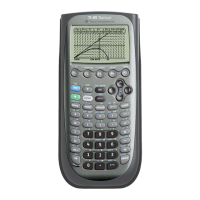
